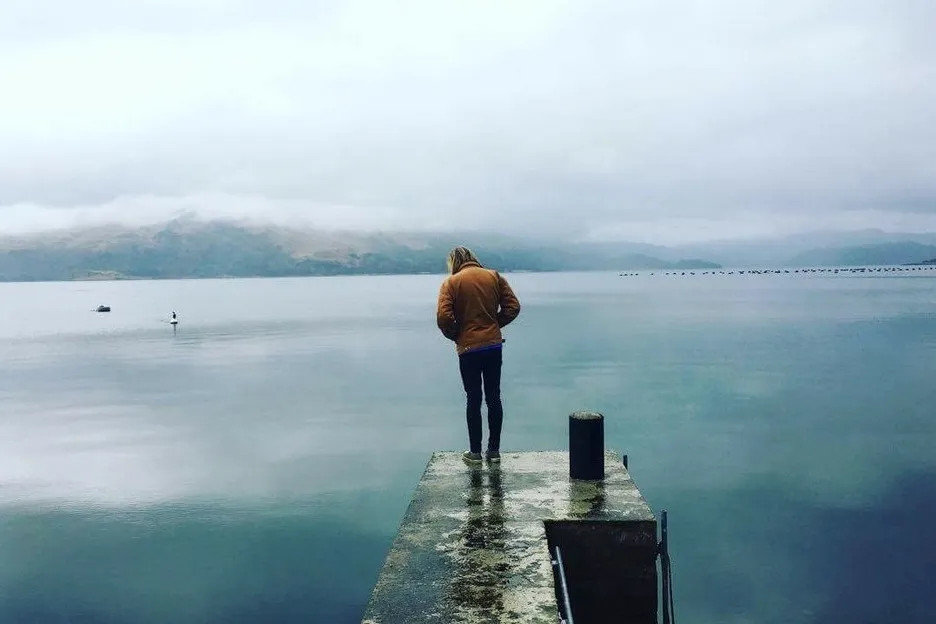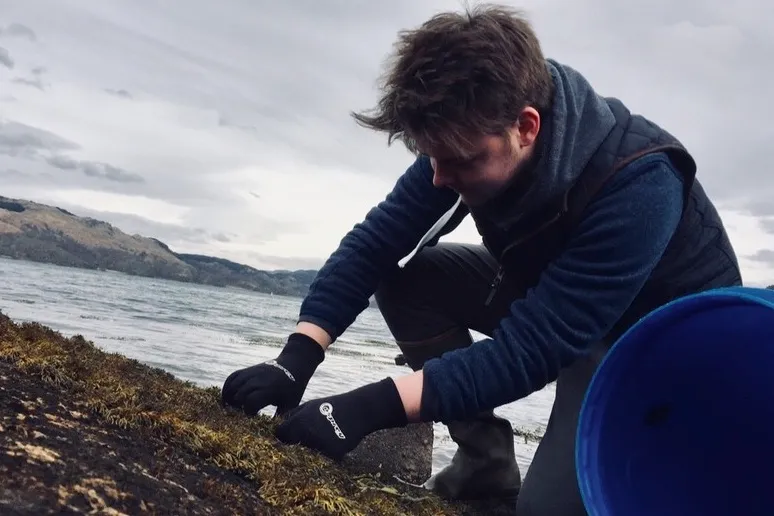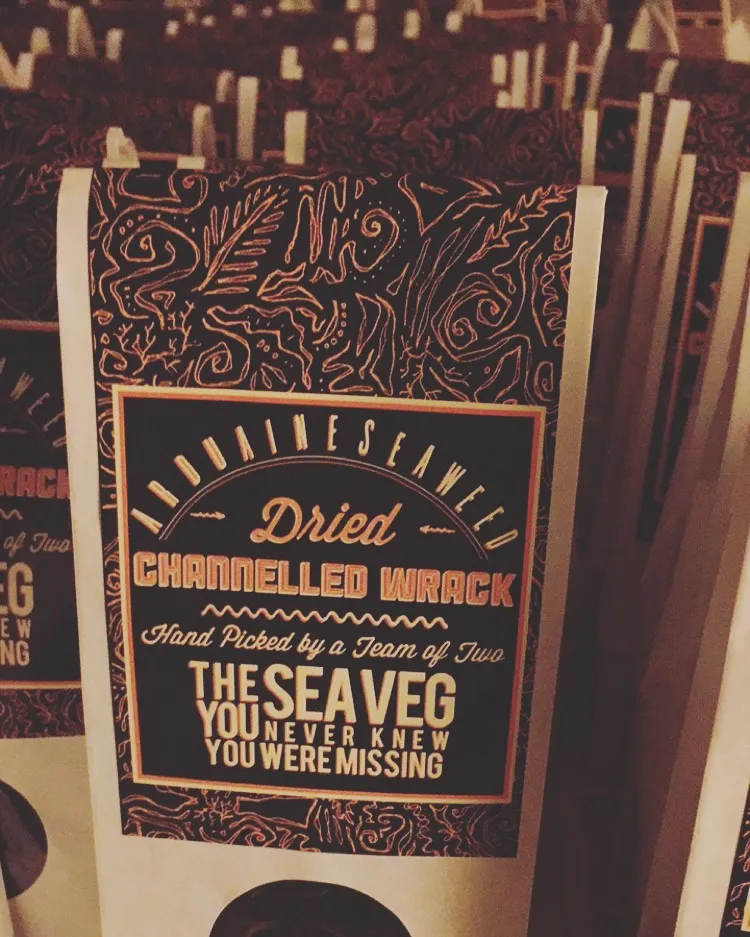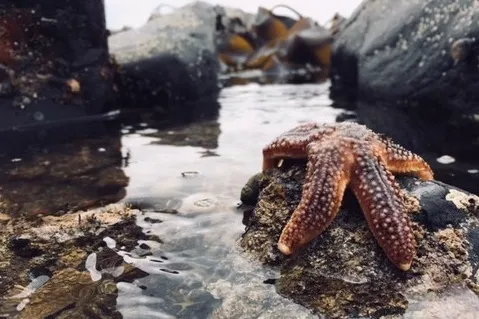In 2016, brothers Ruaridh and Jack Lister-Campbell started Arduaine Seaweed, a business that farms and sells seaweed on the west coast of Scotland.
The company gets its name from the boys' coastal hometown, where the seaweed is hand-picked, washed, packaged and promoted.
We spoke to the brothers to find out what a day in the life of a Scottish seaweed farmer entails.

- A day in the life of an apprentice Conservation Officer
- A day in the life of a rural pub and campsite owner
How did you come up with the idea to farm and sell seaweed?
Jack: Having looked into the idea of setting up a seaweed business, we both agreed that it was something that we could realistically set up by ourselves as it didn’t really require a huge amount of financial expense in the initial stages. I was still in my last year at school at the time, so it was Ruaridh who took the lead in establishing the business as I could only be involved on a part-time basis.
Ruaridh: When I left school in 2016, I wasn’t entirely sure what I wanted to do next – I didn’t want to commit to a university course that I would get fed up with halfway through. My Mum had read a few articles about the health benefits of seaweed and its status as a new superfood. When Jack and I considered it, it seemed like a decent idea for a small business. The farm we live on is right on the coast. With all that seaweed sitting there, unused and available to harvest for free, we thought setting up a small business would be a straightforward thing to do.

How did your friends and family react when you told them you were going to start a seaweed business?
Jack: Our family have all been very supportive, and are all very willing to lend a hand if needed. Although most people are usually a bit sceptical at first, once they’ve heard the initial explanation they’re all very encouraging – a lot of the time wanting to buy a packet to try. Local shop owners have also been very supportive offering to stock our seaweed as a trial to see how it does on shop shelves.
Ruaridh: Most people are quite surprised when we tell them what we do. Although seaweed is definitely up and coming, there’s still a lack of knowledge of its health benefits. It’s also a very tasty ingredient or snack, when cooked correctly. I think the perception of seaweed is slowly changing. More and more shops are stocking it and chefs are using it as an ingredient in a way that isn’t gimmicky.
What does the average day at Arduaine Seaweed involve?
Ruaridh: Most days here are tide and weather dependant. The seaweeds that we harvest grow at different levels – some can be picked at pretty much any tide, while others are only available for half an hour to an hour a day. If the tide and weather are suitable for picking, we’ll head down to the shore and snip the seaweed with scissors before washing it in clean freshwater. After it has been washed, we pack it into our custom-made dehydrators, which are powered by the farms 60-kilowatt wind turbine. We’ll then stockpile the dried seaweed for packaging. Packing usually occurs when the tides or weather make it impossible to harvest seaweed. This involves measuring the correct amount of seaweed for each packet, sealing the packs and adding the labels.
Jack: I think Ruaridh has summed up the average day pretty perfectly. If the tides are right and the weather isn’t completely atrocious, we’ll usually be out harvesting on the shoreline or further out at one of the islands. If the tides are too high or the weather is absolutely intolerable then we’ll be inside packing and labelling.

What’s been your favourite part of setting up and establishing Arduaine Seaweed?
Ruaridh: I really enjoy the whole creative process of designing a product and following it through from start to finish. The challenge of designing a website and trying to create a consistent brand has also been very rewarding.
Jack: I have really enjoyed learning about all the different types of seaweed we have here on the west coast. It’s very satisfying walking along the shoreline and knowing the names of each seaweed and what they can be used for.

What skills have you picked up along the way?
Ruaridh: I would say I’ve learnt a lot about food handling and the whole process of setting up a food business. I’ve also learnt a lot more about product and website design, and trying to keep a consistent social media presence.
Jack: Being able to identify the different types of seaweed has definitely been a new skill for me. I think starting the business has also improved my confidence when contacting shops about stocking our products.

What’s the biggest challenge facing seaweed farmers in the UK?
Ruaridh: Weather is definitely a massive daily challenge facing UK seaweed farmers, especially those on the west coast. The weather here is so changeable and while most of the time it’s possible to grin and bear it, sometimes it does make harvesting pretty much impossible. We also face the challenge of trying to change the general attitude towards edible seaweed from a novelty food to something that is taken seriously as a very healthy, versatile ingredient.
What’s been your most amazing wildlife experience while farming seaweed?
Ruaridh: We see a lot of inquisitive seals that come pretty close, especially if we’re taking the dingy out to one of the islands. We also see the otters, porpoises and plenty of different birds. Some of the most interesting creatures you see though are the ones that appear when the tides are at their lowest. These can be funny little snails or fluorescent sea anemones.
Jack: One time, when we were heading down to launch the dingy, we found that the waters surrounding the pier were alive with a huge shoal of sprat (a kind of tiny fish). The sprat were being hunted by a large shoal of mackerel – there were so many fish crammed into such a small space that you couldn’t see the sea floor. Every so often a mackerel would dart in, causing the sprat to jump up out of the water.

If you were a British animal, what would you be?
Ruaridh: I’d have to choose a Gannet. They’re pretty birds and the way they dive into the water from so high is pretty cool.
Jack: I think I would want to be some sort of pet, like a cat or a dog, simply because I don’t think I could bear having to live outside 24/7 in the rain, wind and snow we have here on the west coast.
In your opinion, where can you find the best view on the west coast of Scotland?
Ruaridh: I’m probably biased but I would say that the best view on the west coast is from the top of the hill behind our house, the highest part of the farm. From there you can look down the Sound of Jura, through the Corryvreckan and up to Mull.
Jack: the best view is here on the west coast, from our local trig point. It’s the highest point in the area with a full panoramic view of Arduaine, including all the surrounding islands dotted along the coast. Whether it’s clear skies and sunshine or pouring rain, the view is always pretty breath-taking.

What advice can you offer to young people wanting to get involved in seaweed farming, or any type of farming for that matter?
Ruaridh: I would say try and start relatively small. Don’t overextend and commit to too many orders that you can’t meet. Also, I would suggest having something else on the go at the same time – another job or education etc. – as starting up a business can be slow going. If you aren’t doing something else, you might find yourself getting pretty frustrated when things go slowly.
Jack: You really have to be willing to put in the effort without much reward, initially. That being said, if you’re halfway through setting up and you realise that this isn’t something you want to do, you shouldn’t feel embarrassed or ashamed if it doesn't work out.
For more information and to watch a video about Arduaine Sweaweed, visit arduaineseaweed.co.uk
Cooking with seaweed? Our friends at BBC Good Food produced this handy guide to seaweed, its nutritional benefits and how to use it in the kitchen.